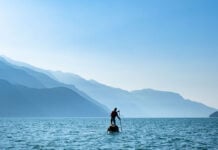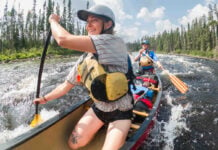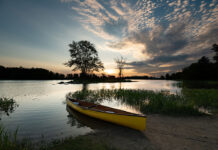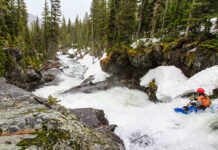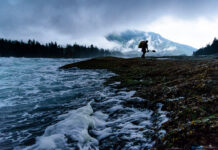Cresting whitecaps, furious winds and meter-high seas—many canoeists have harrowing campfire tales of fighting to stay afloat as the wind and weather changed rapidly. When canoeing in rough water, use these tactics to stay upright and (relatively) dry.
8 techniques for canoeing in rough water
1 Install a spray deck
“It provides a drier and safer time in rough water,” says Morgan Goldie of North Water, manufacturers of expedition proven canoe spray decks. “Aside from helping reduce the effects of wind on the boat and help keep water out of the boat,” he adds, “a spray deck can also aid in keeping the paddlers’ legs and bodies warmer during inclement weather and act as an emergency shelter in a pinch.”
2 Prevent seasickness
The time-honored herbal remedy of ginger root effectively prevents swell-induced queasiness. Available in pill form or as chewable candies—take the recommended dosage before heading out on the water. If you get sick, remember to lean straight forward, not over the side—this is not the time or place to flip.
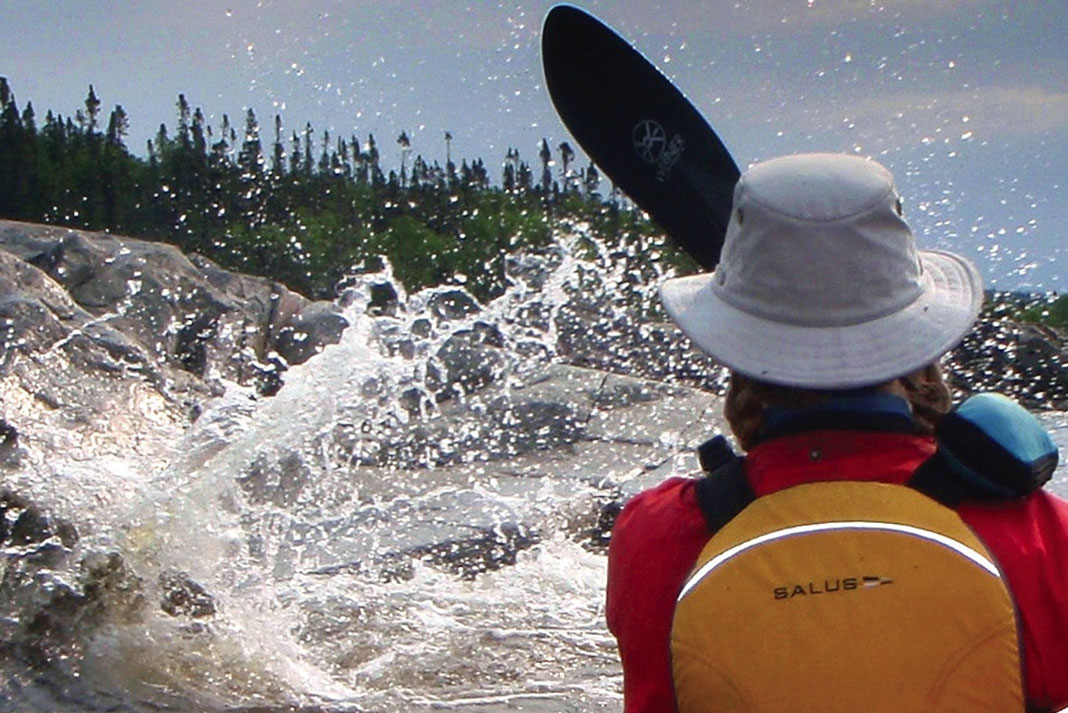
3Trim your canoe
A properly balanced canoe is important for performance and stability when canoeing in rough water. Think about keeping canoe packs, barrels and paddlers as low and centered as possible. Sliding seats can help fine-tune the balance of a loaded canoe once you are on the water. Weight your canoe slightly fore of center for a headwind and slightly aft of center for a tailwind.
4 Try a double blade
Although traditionalists might scorn the use of double-bladed paddles, they’re ideal for big lake water travel. Even the late expedition canoeist, Herb Pohl, swore by it, as it allows the paddler to brace quickly on either side in unpredictable conditions.
5 Time your surf launches and landings
Before heading out from, or in to, the beach, take time to study the conditions into the surf zone. Avoid areas with large cresting waves and submerged rocks. Once in the surf zone, always stay perpendicular to the waves to avoid broaching. Launching into surf can be difficult, so maintaining power and direction through the break zone is important. Any bailing can be done once you clear the area. When landing, avoid surfing a wave to shore. Instead, paddle in the trough—back-paddling as needed to stay off the face—and aim to reach shore on the back of the wave crest in front of you. Once you hit the beach, jump out and pull your canoe out of the way before the next wave crashes down.
6 Steer clear of headlands and steep cliffs
In rough conditions, waves typically bounce off these features, creating what is known as reflection waves. In turn, these reflection waves interact with incoming waves, forming confused and choppy seas. When planning your route, use topographic maps or charts to plot a smoother course around these obstacles.
7 Set a ferry angle
Crossing to an island in strong wind and waves is like paddling in current. Use a ferry angle to offset the forces working on the canoe.
8 Accurately gauge the size or power of waves
Depending on wave height and length, rough water conditions can be a fun challenge or hellish struggle. Beware of tall waves with short wavelengths, as these lead to cresting waves that will quickly swamp a canoe. Avoid taking any waves broadside.
The final word on rough water canoeing
If in doubt about canoeing in rough water, a wise paddler once gave me this advice: “It’s better to be on shore wishing you were on the water, than to be on the water wishing you were on shore.”
Follow these tips to stay upright and (relatively) dry. | Feature Photo: Jonathan Pratt



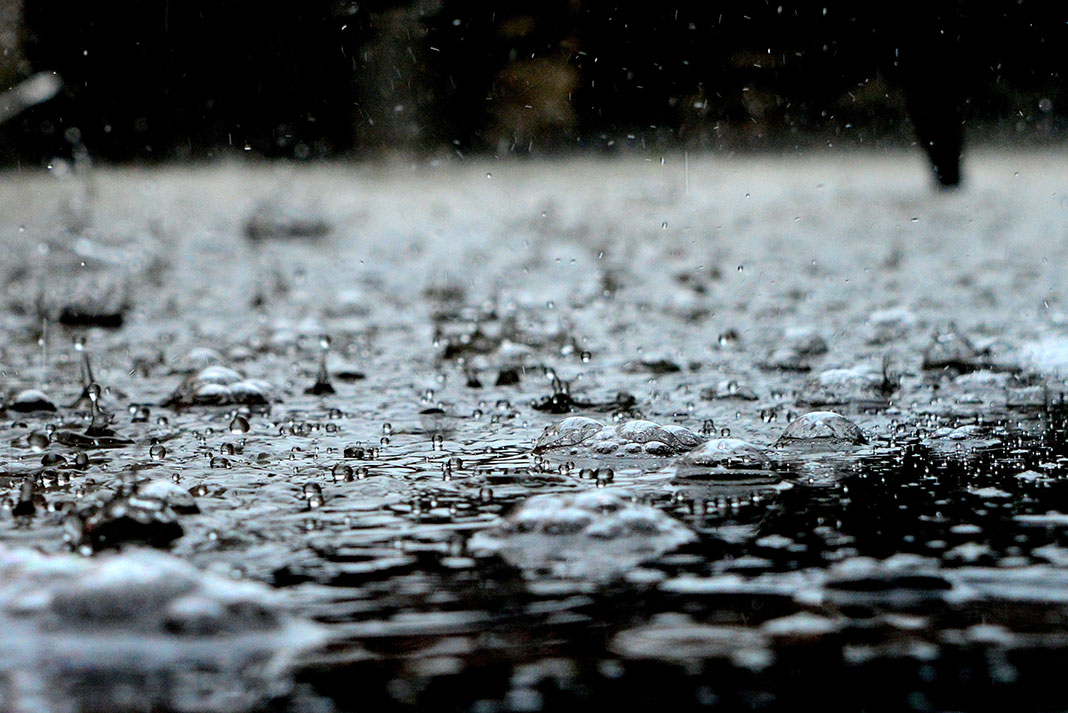
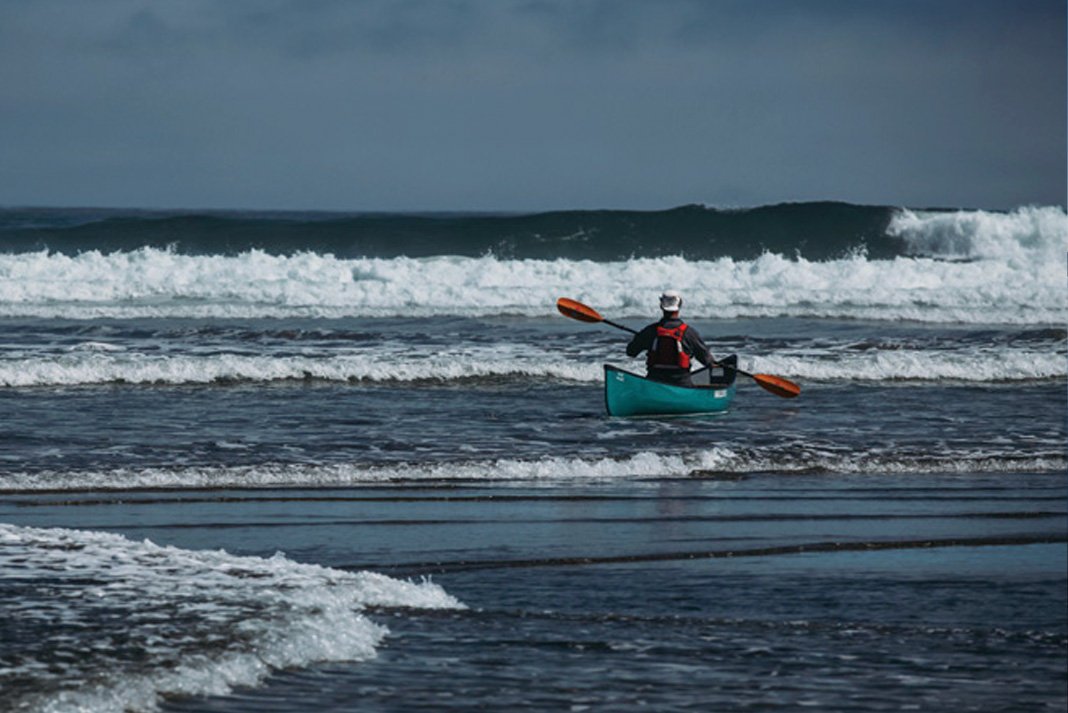

 This article was first published in the Summer/Fall 2010 issue of Canoeroots Magazine.
This article was first published in the Summer/Fall 2010 issue of Canoeroots Magazine. 